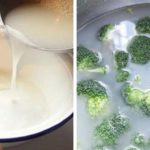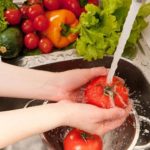Vegetables prone to chemical exposure
Mustard Greens

While this vegetable is a common sight on dinner tables, it is also one of the most pesticide-laden vegetables. Mustard greens are susceptible to a variety of pests when grown in the ground, leading farmers to apply excessive amounts of pesticides and fertilizers shortly before harvesting. This practice is hazardous as the vegetables may still contain harmful residues of these chemicals when consumed, due to insufficient time for decomposition.
Yardlong Beans

Yardlong beans are susceptible to fruit borers, which necessitate frequent spraying to ensure a successful harvest. However, this variety of beans matures rapidly, creating a conflict for growers, who sometimes have no choice but to sell their produce prematurely, with residual pesticides still present.
Luffa

Luffa, a traditional folk dish, continues to be heavily sprayed with pesticides and fertilizers in agricultural production. Some farmers, driven by short-term profits, apply growth stimulants to make the luffa vines longer and more appealing.
Safe luffa tend to have shorter distances between the nodes, with stiff stems, deep green, thick leaves, and abundant trichomes. Conversely, unsafe luffa exhibit wider node spacing, thinner stems, and fewer trichomes.
Tips for choosing safe produce
– When selecting vegetables at the market, adhere to the following guidelines:
– Opt for reputable and reliable vendors who offer produce with clear origins and branding, enabling traceability and quality assurance.
– Learn to identify high-quality vegetables based on their appearance: choose those that are intact, free from scratches, bruises, or decay. The color should be natural, not overly vibrant, and the vegetables should not appear overly wilted. Select items that feel heavy, firm, and crisp.
– Be cautious if you notice any unusual white substances on the surface of the produce, as this could indicate pesticide residues. Additionally, be alert for strange odors, aside from the characteristic scent of the vegetable or fruit.
Effective methods to wash away pesticides

A helpful tip is to wash vegetables and fruits with rice washing water. Illustrated.
– Rice washing water method: Rice washing water has a mildly acidic pH, which can help neutralize acidic pesticides. As the rice washing water stands, it gradually loses its acidity and becomes less effective at breaking down harmful substances in the vegetables.
Additionally, the slightly viscous rice washing water can absorb some of the pesticides and chemicals that adhere to the surface of the produce. Furthermore, since rice washing water does not contain additional chemicals, it is safer to use for cleaning fruits and vegetables. This method is particularly effective for cleaning small, seeded fruits like strawberries, mulberries, and grapes.
– Diluted salt water soak: Soaking vegetables and fruits in diluted salt water for 15-20 minutes is believed to eliminate bacteria and chemical residues.
However, according to PGS.TS Nguyen Duy Thinh (former lecturer at the Institute of Biotechnology and Food Technology, Hanoi University of Technology), soaking produce in salt water only has a limited effect on inhibiting or killing bacteria. It does not automatically remove harmful chemicals.
To safeguard your health and that of your family, experts recommend the following: after purchasing vegetables and fruits, clean them thoroughly by rinsing them multiple times with clean water, ideally 4-5 times. Use a large basin of water to effectively remove dirt and sand. Then, rinse them under running water to further eliminate dirt and chemical residues. Once they are clean, it is crucial to peel the skin or outer layer to minimize the risk of consuming any remaining contaminants.
Additionally, cooking vegetables, meat, and fish at high temperatures can break down stubborn chemical bonds, making it safer for consumption. Therefore, always remember the age-old adage: “Eat cooked food and drink boiled water” to maintain optimal health.
According to Nguoiduatin




































